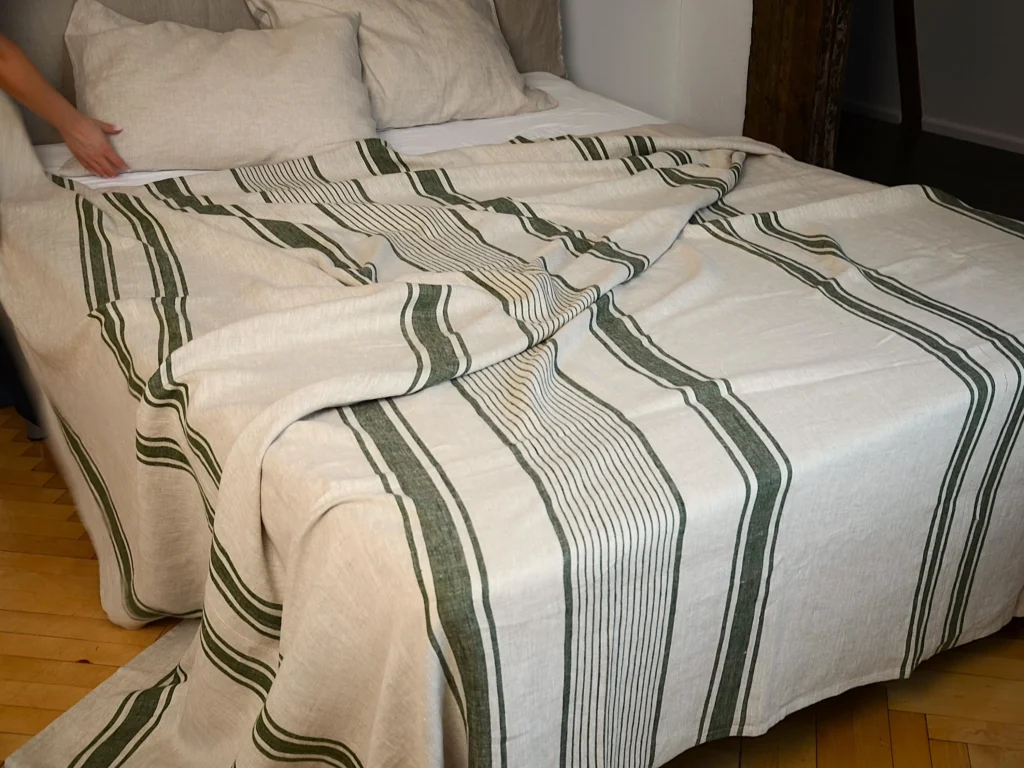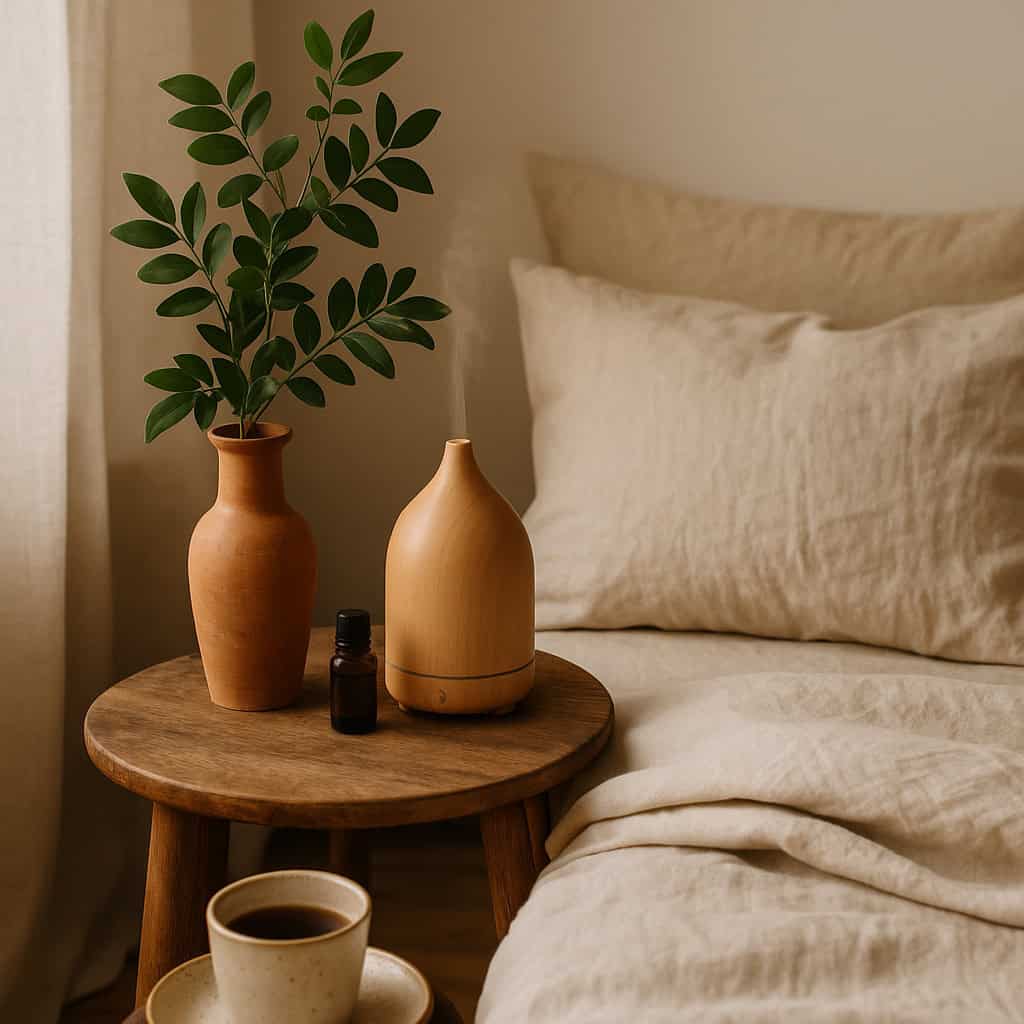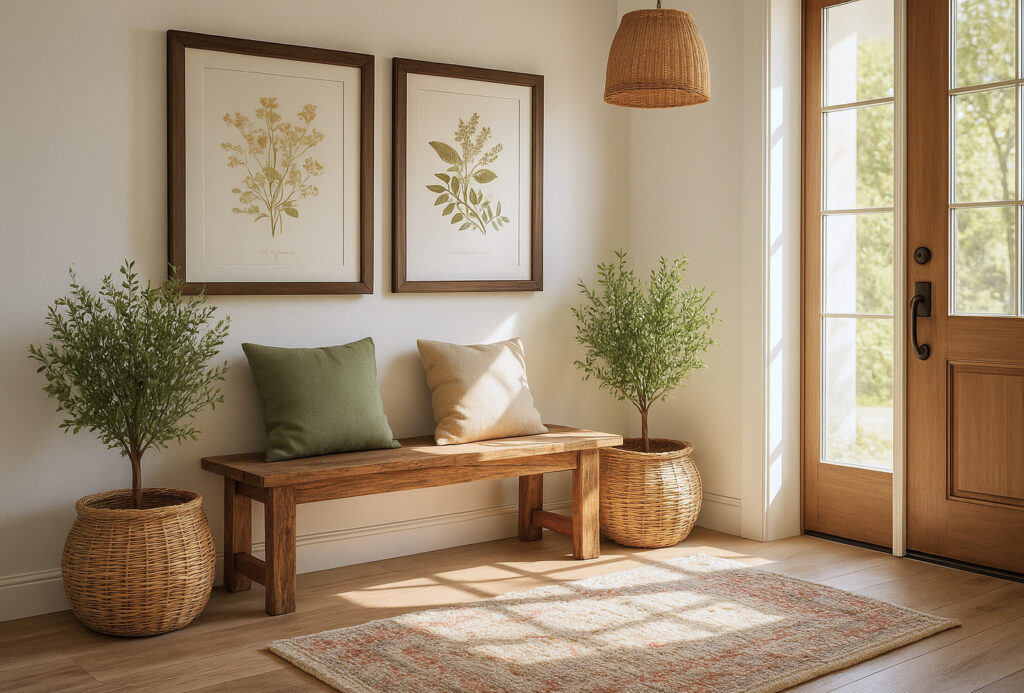Ever walked into your living room and instantly felt… off? Not because anything’s wrong exactly—but because everything’s too much? Yeah, me too.
The colors are too loud, the surfaces are busy, and somehow your nervous system thinks it’s time to run a marathon. A chaotic room = a chaotic brain.
Let’s fix that.
This guide isn’t about making your home look magazine-perfect. It’s about making it feel like an exhale. A place where your shoulders drop, your jaw unclenches, and your nervous system can finally stop scanning for danger.
Here’s what we’ll cover:
- Why the living room matters for emotional regulation
- What science says about sensory overwhelm
- How to shift from stimulation to soothing
- Texture, light, scent, and sound: practical changes
- What to remove—and what to gently invite in
Let’s turn your most lived-in space into your most life-giving one.
Why the Living Room Matters for Emotional Regulation
Your living room isn’t just a space to entertain guests or crash after a long day. It’s often the emotional heart of the home—the place where your nervous system either settles… or spikes.
Why? Because it’s where multiple roles collide: parenting, resting, scrolling, eating, folding laundry, watching Netflix, sometimes all within the same hour.
Your brain loves context. When one space holds everything, it gets confused. Add in clutter, harsh lighting, constant noise, and your living room becomes a low-key stress trigger.
Research from environmental psychology shows that visual disorder (think: too many objects, clashing patterns, chaotic layout) increases cortisol levels and makes it harder for the brain to switch into a relaxed, parasympathetic state.
Translation? Even if you think you’re relaxing, your body might still be in survival mode.
The good news? You can gently reclaim this space. No major renovations. No need to become a minimalist monk. Just subtle sensory shifts that tell your body: you’re home, and you’re safe.
The Science of Sensory Overwhelm
When your senses are overloaded, your brain can’t prioritize. That pile of laundry? The loud wall art? The dusty shelf in your peripheral vision? Your nervous system clocks them all.
Neuroscientists call this “attentional load.” The more visual and auditory clutter you face, the more cognitive energy your brain burns trying to filter it out.
Over time, that low-level stress compounds. You may feel tired, agitated, or inexplicably restless. And yet—nothing “bad” happened. It’s just that your environment never let you truly exhale.
The fix isn’t perfection. It’s intention. And it starts with noticing.
From Stimulating to Soothing: The Nervous System Shift
Your nervous system thrives on rhythm, softness, and subtle sensory support. The spaces we live in can either heighten stress—or gently bring us home to ourselves.
Here’s how to begin the shift:
- Dim the lighting. Swap overhead glare for layered lamps, candles, or soft ambient light.
- Soften the palette. Earthy, muted tones create a sense of calm and grounding.
- Quiet the clutter. Use closed storage, natural baskets, or linen covers to reduce visual noise.
- Invite a pause. Leave one chair intentionally empty. One surface clear. One corner for nothing but breath.
- Add texture that soothes. A Hugmelinen throw draped over your sofa or armchair offers more than comfort—it signals rest, warmth, and grounded presence.
A nervous-system-friendly room doesn’t demand attention. It whispers ease.
The Power of Texture, Light, Scent, and Sound
Engage your senses—but gently.
- Texture: Natural fibers like linen, cotton, wool, and untreated wood regulate touch. Avoid shiny, plastic or cold surfaces.
- Light: Let daylight lead. Use sheer curtains to diffuse. Avoid overhead LEDs.
- Scent: Essential oils like neroli, vetiver, or cedarwood support parasympathetic states. Ditch synthetic fragrances.
- Sound: Opt for silence or soft ambient soundscapes. Avoid TV as background noise.
Tip: create a “ritual nook”—a chair near light, a blanket, your journal, and nothing else. Your brain will thank you.
What to Remove—And What to Gently Invite In
Sometimes, the most nourishing thing is what you don’t see.
Remove:
- Anything broken, unused, or constantly catching your eye
- Loud artwork that doesn’t match your current season
- Over-stimulating textiles (busy patterns, rough synthetics)
Invite:
- One grounding piece of art (or nothing at all)
- A linen or cotton throw over the couch
- A small vase of herbs or branches you picked, not bought
It’s not about style. It’s about support.
Conclusion: Your Living Room Can Exhale, Too
If your home is the stage for your nervous system, your living room is the spotlight. But the goal here isn’t performance. It’s presence.
Soften one corner. Light one candle. Fold one blanket. Choose intention over ideal.
Your 3-Step Reset:
- Clear just one surface
- Add one texture that soothes
- Sit in one spot for five full breaths
That’s it. From clutter to calm begins with one shift.
Want a printable version to keep handy?
Get the free Clutter to Calm Checklist and start transforming your space—one breath, one corner at a time.
[Download the free PDF →]
Sources + Reading
- Kaplan, S. (1995). The restorative benefits of nature: Toward a cognitive model.
- Ulrich, R. (1984). View through a window may influence recovery from surgery.
- Bratman, G. N., et al. (2015). Nature experience reduces rumination and subgenual prefrontal cortex activation.
- Huberman Lab Podcast (2022). How Light Affects Mood & Mental Health.




